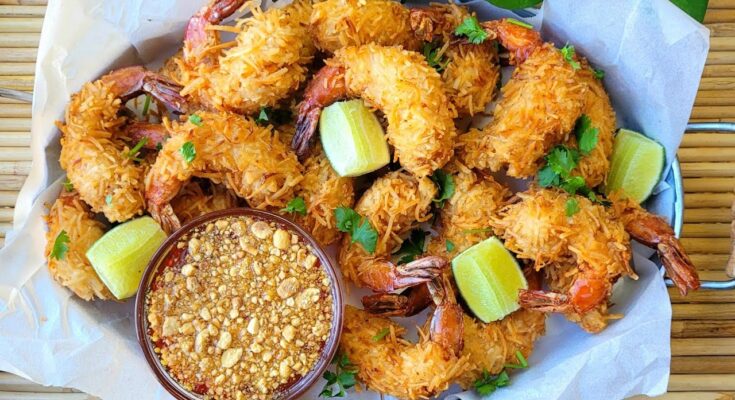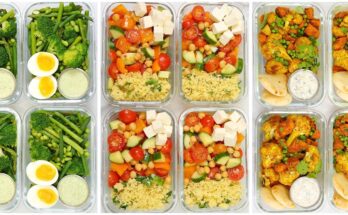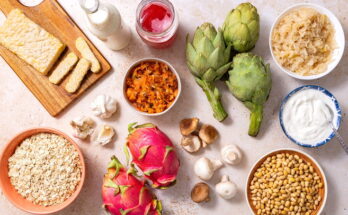Coconut Shrimp Recipe: Coconut shrimp is a delicious appetizer or main course that combines tender shrimp with a sweet, crunchy coconut coating. This dish is a perfect blend of savory and tropical flavors, making it a popular choice at parties, restaurants, and family dinners.
Why Coconut Shrimp is a Crowd Favorite
Coconut shrimp is loved for its unique texture and taste. The crispy coconut crust provides the perfect crunch, while the juicy shrimp inside creates a delightful contrast. Paired with a tangy dipping sauce, this dish is irresistible for seafood lovers.
Ingredients for Coconut Shrimp
Essential Ingredients
- 1 lb large shrimp, peeled and deveined
- ½ cup all-purpose flour
- 2 large eggs, beaten
- 1 cup shredded sweetened coconut
- 1 cup panko breadcrumbs
- ½ tsp salt
- ½ tsp black pepper
- 1 cup vegetable oil for frying
Optional Ingredients and Variations
- A pinch of paprika or cayenne pepper for a spicy kick
- Lime zest for a citrusy note
- Gluten-free breadcrumbs for dietary preferences
- Unsweetened coconut for a less sweet option
Preparing for the Recipe
Choosing the Right Shrimp
Select large or jumbo shrimp for this recipe. They are easier to handle, cook evenly, and provide a satisfying bite. Fresh shrimp is preferred, but thawed frozen shrimp works just as well. Ensure they are deveined and peeled, leaving the tail on for easy handling.
Prepping the Ingredients
- Wash and pat dry the shrimp with a paper towel.
- Set up a breading station with three bowls: one for flour (mixed with salt and pepper), one for beaten eggs, and one for a mix of shredded coconut and panko breadcrumbs.
- Preheat your oil in a deep skillet to 350°F (175°C).
Step-by-Step Instructions
Preparing the Breading Station
Arrange your breading station in order to streamline the process. Use wide, shallow bowls for easy coating.
- Bowl 1: Flour mixed with salt and pepper.
- Bowl 2: Beaten eggs.
- Bowl 3: Coconut and panko mixture.
Coating the Shrimp
- Dip each shrimp into the flour, ensuring an even coat.
- Submerge the floured shrimp into the beaten eggs.
- Finally, press the shrimp into the coconut-panko mix, ensuring it’s well-covered on all sides.
Frying the Shrimp
- Heat the oil in a skillet or deep fryer to 350°F.
- Fry the shrimp in batches for 2–3 minutes on each side until golden brown.
- Remove and place on a paper towel-lined plate to drain excess oil.
Alternative Cooking Methods (Baking and Air Frying)
- Baking: Place coated shrimp on a greased baking sheet. Bake at 425°F for 12–15 minutes, flipping halfway through.
- Air Frying: Spray shrimp with cooking oil and air fry at 375°F for 10–12 minutes, shaking the basket occasionally.
Making the Perfect Dipping Sauce
Popular Sauces for Coconut Shrimp
- Sweet chili sauce
- Pineapple salsa
- Mango chutney
Easy Homemade Sauce Recipe
Combine ½ cup of orange marmalade, 2 tbsp of honey, and 1 tsp of Dijon mustard for a quick and tangy dipping sauce.
Serving Coconut Shrimp
Best Sides to Pair With
Coconut shrimp pairs beautifully with a variety of sides, making it versatile for any meal or occasion. Here are some popular choices:
- Steamed Rice: Light and fluffy rice complements the tropical flavors.
- Vegetable Stir-Fry: Add a colorful medley of bell peppers, zucchini, and snap peas for a nutritious side.
- Coleslaw: A creamy, tangy coleslaw balances the sweetness of the shrimp.
- Tropical Fruit Salad: Include mango, pineapple, and papaya for a refreshing, tropical touch.
Presentation Tips
Serve your coconut shrimp on a platter lined with lettuce leaves for a pop of color. Add lime wedges and a small bowl of dipping sauce on the side. Garnish with chopped cilantro or parsley for a final flourish.
Tips for Perfect Coconut Shrimp
Ensuring Crispy Coating
- Use panko breadcrumbs for a light, airy texture that stays crispy.
- Pat the shrimp dry before breading to help the coating adhere better.
- Fry in small batches to maintain consistent oil temperature and prevent sogginess.
Avoiding Common Mistakes
- Skipping the seasoning: Add salt and pepper to the flour mixture to flavor the shrimp from the start.
- Overcrowding the pan: Too many shrimp at once can lower the oil temperature and result in a greasy texture.
- Using low-quality oil: Use a neutral oil with a high smoke point, like vegetable or canola oil.
Storing and Reheating Coconut Shrimp
Proper Storage Tips
- Store leftover coconut shrimp in an airtight container in the refrigerator for up to 3 days.
- Avoid stacking shrimp directly on top of each other to preserve the coating’s crispiness. Use parchment paper to separate layers.
Reheating Without Losing Crispiness
- Reheat in an oven at 375°F for 8–10 minutes.
- Alternatively, use an air fryer at 350°F for 5–7 minutes to restore the crunchy texture.
- Avoid microwaving, as it can make the coating soggy.
Nutritional Information
Calories and Macronutrients
On average, a serving of coconut shrimp (about 4–5 pieces) contains:
- Calories: 250–300
- Protein: 15–20g
- Fat: 12–15g
- Carbohydrates: 18–22g
Healthier Substitutes
- Replace all-purpose flour with almond flour for a gluten-free option.
- Use unsweetened coconut to reduce sugar content.
- Bake or air fry instead of deep frying to cut down on fat and calories.
FAQs about Coconut Shrimp Recipe
1. What ingredients are needed for a coconut shrimp recipe?
To make coconut shrimp, you will need large shrimp (peeled and deveined), all-purpose flour, salt, black pepper, eggs, shredded coconut, and panko breadcrumbs. Some recipes might also call for garlic powder and paprika for extra flavor.
2. How do you ensure the coconut does not fall off during frying?
For the best results, make sure to press the coconut and breadcrumb mixture firmly onto the shrimp. Dip the shrimp first in flour, then in beaten eggs, and finally in the coconut mixture. Ensure each layer is well-coated and compacted before frying.
3. Can coconut shrimp be made in an air fryer?
Yes, coconut shrimp can be cooked in an air fryer. Preheat the air fryer to 400°F (200°C), place the shrimp in a single layer, and cook for about 8-10 minutes, flipping halfway through, until golden and crispy.
4. What are some dipping sauces for coconut shrimp?
Popular choices include sweet chili sauce, mango salsa, or a piña colada dipping sauce made with pineapple and coconut cream. Each of these complements the sweetness of the coconut perfectly.
5. Is it possible to make coconut shrimp ahead of time?
While coconut shrimp is best served fresh, you can bread the shrimp and freeze them on a baking sheet. Once frozen, transfer them to a freezer bag and fry or bake from frozen, adding a few extra minutes to the cooking time.
Conclusion
Making coconut shrimp at home is easier than you think! With this step-by-step guide, you’ll be able to create a restaurant-quality dish that’s crispy, golden, and bursting with tropical flavors. Whether you’re hosting a party or craving a family dinner with a twist, coconut shrimp is sure to impress.



